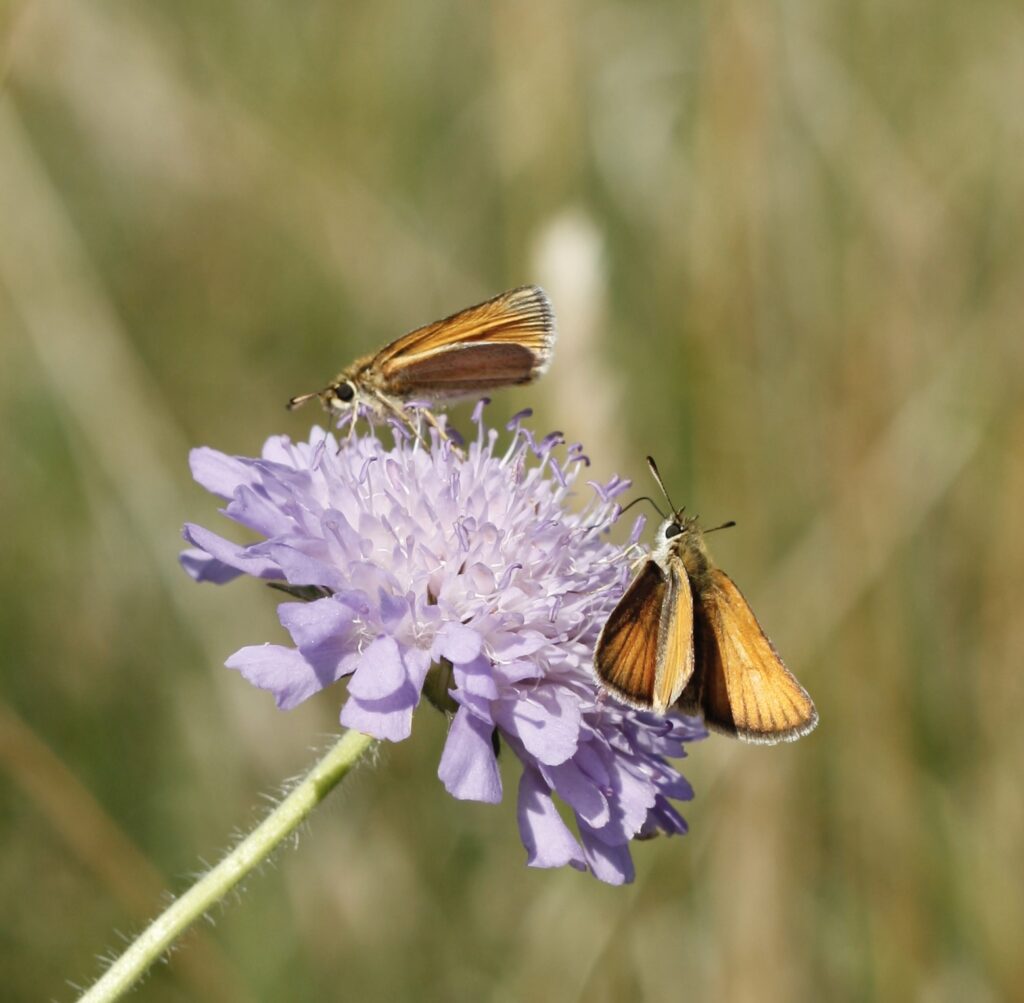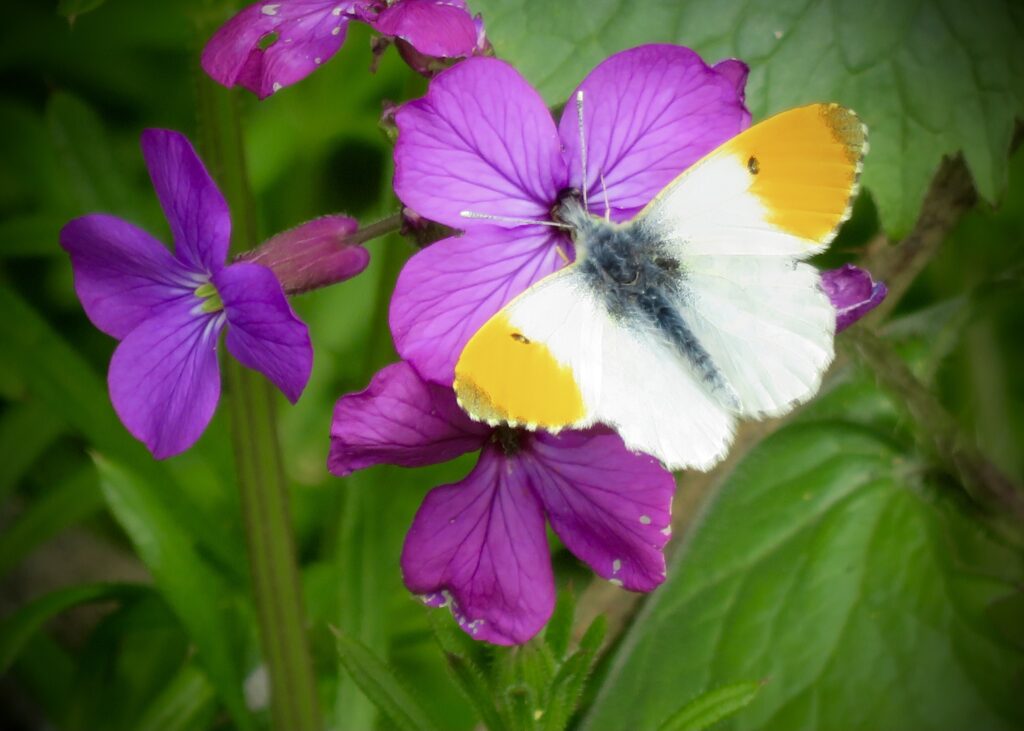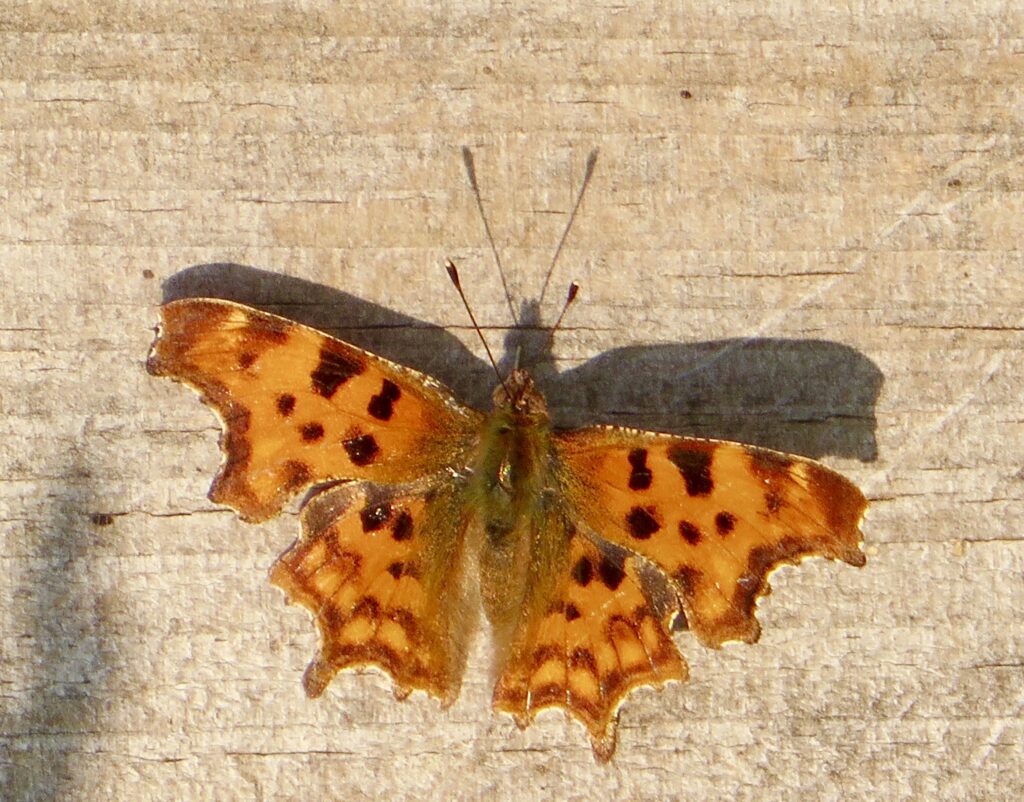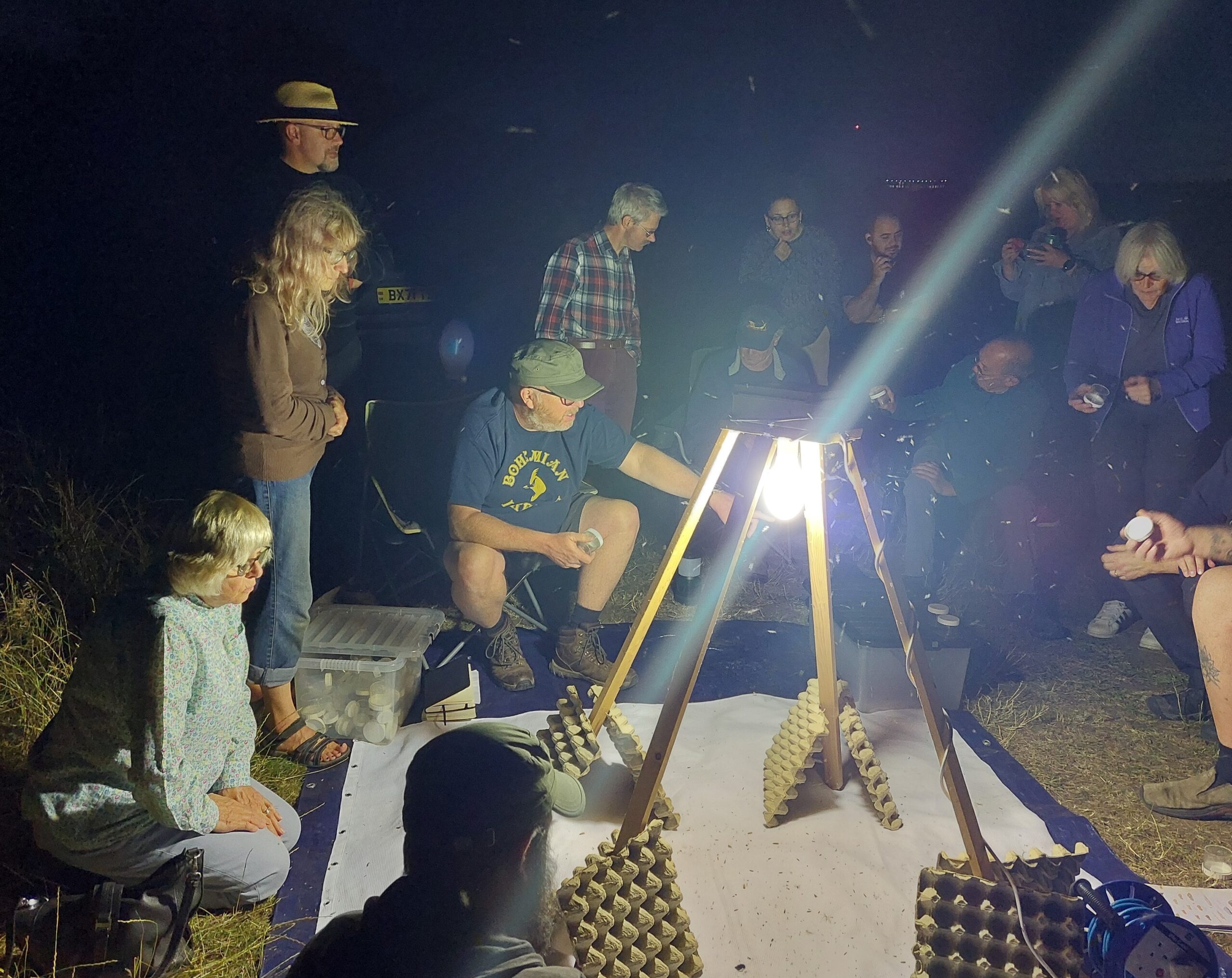With its variety of habitats, including meadow, woodland, scrub, dyke and pond, The Hook is rich in both day time and night time insect life.
Butterflies

Essex Skippers on Field Scabious 
Orange Tip 
Comma sunning itself
Each summer since 2020, from the beginning of April until the end of September, volunteers have completed a butterfly survey, on a weekly basis. They identify and record the butterflies they see. This contributes to the UK butterfly monitoring scheme.
We have recorded 21 species altogether. Small White butterflies are the most common species seen throughout the season, but there are also good numbers of Large Whites and a few Green Veined whites. The other species where big numbers are recorded are Gatekeepers, Meadow Browns and Ringlets. These appear in early summer for just a few weeks, after which we must wait for a year to see them again. Skippers are seen every year: Small Skippers, Essex Skippers and Large Skippers. All of these are similar to moths in appearance. The other species that have been recorded are: Brimstone, Orange Tip, Comma, Red Admiral, Small Tortoiseshell, Holly Blue, Common Blue, Speckled Wood, and Peacock, plus, very rarely, Painted Lady, Small Copper, and Brown Argus.
Each year presents its own challenges for butterflies, whether it is a drought that dries up their food plants, or a cold spring that stops them flying, however, it is encouraging to see the increasing number of butterflies being observed on the reserve. Our work in creating and maintaining a varied habitat with lots more wildflowers is paying off.
Moths
At night The Hook continues to buzz with insect life. Over 70 different species of moth have been recorded on The Hook at ‘Moth Watch’ sessions where moth attracting lights are set up to see what flies in.

Moth Watch on The Hook
